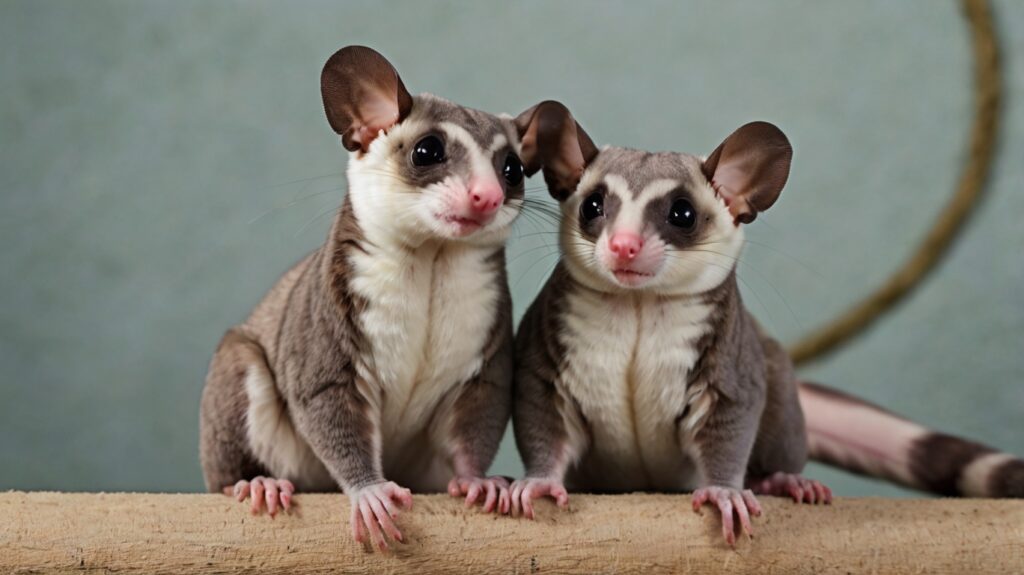Table of Contents
- Introduction
- Why Sugar Gliders Need Companionship
- How to Bond Sugar Glider Pairs
- Signs of a Strong Bond Between Sugar Gliders
- Common Bonding Challenges & Solutions
- Conclusion
- FAQs
Introduction
Sugar gliders are social, affectionate marsupials that thrive in pairs or small groups. In the wild, they rely on companionship for emotional well-being and survival. When kept as pets, bonding sugar gliders properly ensures they remain happy, healthy, and stress-free. This guide explores why companionship is essential, how to bond sugar glider pairs effectively, and tips for maintaining a strong relationship between them.

Why Sugar Gliders Need Companionship
Sugar gliders are highly social animals that form deep bonds with their peers. Isolation can lead to depression, anxiety, and even self-harm. Here’s why companionship is crucial:
- Natural Behavior: In the wild, they live in colonies for safety and social interaction.
- Emotional Health: Paired gliders groom each other, play, and sleep together, reducing stress.
- Longevity: Happy, bonded gliders tend to live longer, healthier lives.
A single sugar glider requires constant human interaction, but even that may not fully replace the need for a fellow glider.
How to Bond Sugar Glider Pairs
Bonding sugar gliders takes patience and the right approach. Follow these steps:
1. Choose Compatible Pairs
- Same-sex pairs (to avoid breeding) or neutered males with females.
- Similar age and temperament for better compatibility.
2. Introduce Them Gradually
- Start with separate cages placed near each other.
- Swap bedding to familiarize them with each other’s scent.
3. Supervised Playtime
- Allow them to interact in a neutral space under supervision.
- Watch for aggression; separate if necessary and reintroduce slowly.
4. Shared Feeding
- Offer treats simultaneously to create positive associations.
- Use a bonding pouch to encourage closeness.
5. Be Patient
- Bonding can take days to months, depending on their personalities.
Signs of a Strong Bond Between Sugar Gliders
A well-bonded pair will display:
✅ Cuddling and sleeping together
✅ Mutual grooming
✅ Playing without aggression
✅ Vocalizing happily (crabbing or barking less)
If they show these behaviors, they’ve successfully bonded!
Common Bonding Challenges & Solutions
| Challenge | Solution |
|---|---|
| Aggression during introduction | Separate and reintroduce slowly |
| One glider dominating food | Feed in separate dishes initially |
| Lack of interest in bonding | Use treats and a bonding pouch |
| Excessive fighting | Consult a vet or experienced breeder |
Conclusion
Bonding sugar gliders is essential for their well-being. By introducing them properly, ensuring compatibility, and monitoring their interactions, you can create a happy, harmonious pair. Patience and consistency are key—soon, your sugar gliders will enjoy a lifelong companionship.
FAQs
1. Can sugar gliders live alone?
While possible with extensive human interaction, they thrive better with a companion.
2. How long does bonding take?
It varies—some bond within days, others take weeks or months.
3. What if my sugar gliders fight?
Separate them and reintroduce slowly. Persistent aggression may require expert advice.
4. Can I bond an older glider with a younger one?
Yes, but monitor interactions as age differences may affect dynamics.
5. Do sugar gliders bond with humans?
They can form bonds with owners but still need glider companionship.
